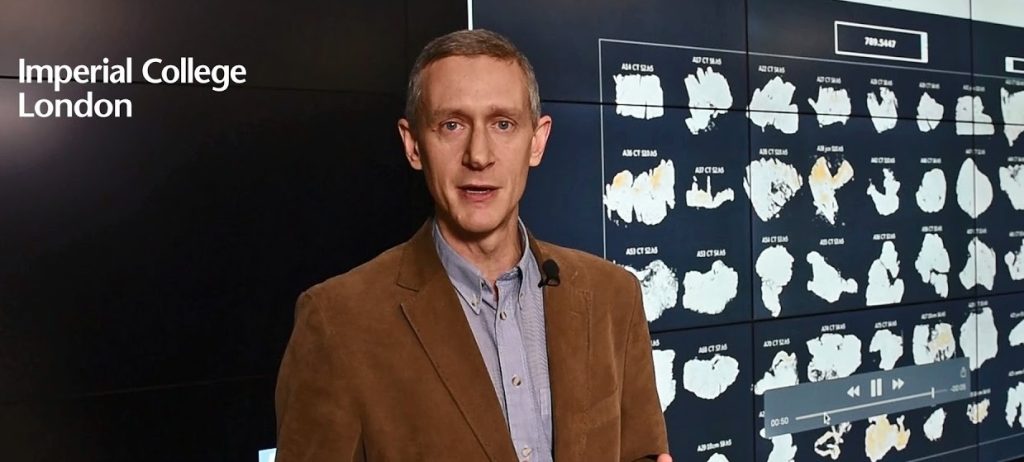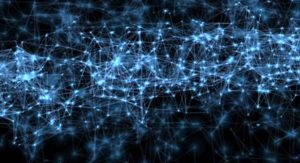
Congratulations to Professor Tim Ebbels who was recognised in the latest round of academic promotions and promoted to Professor of Biomedical Data Science. We met with him to find out more about his background, research, and wider thoughts on the health sector.
Introduce yourself – who are you and what do you do?
Currently, I work in diverse areas, from working out how to integrate metabolomic with other omics data, to trying to understand systems using biological pathways. We work with data all the way from raw instrument output to final interpretation, often having to develop new bioinformatics methods along the way. A key problem we’re working on now is how to identify – computationally – potentially thousands of unknown metabolites in large and complex datasets. Only with these identities can the data be of biological value. Another big problem is how to combine datasets together when you don’t know these molecular identities. Luckily the data are rich in latent information which can be used to aid this process and construct large cohorts needed to search for the origins of disease.
What first inspired your interest in Biomedical Data Science?
I trained as a physicist (my PhD is in astronomy) but moved into the field now known as Data Science more than 20 years ago. I realised that there were many problems in biomedicine that would benefit from the same sorts of mathematical techniques I had learnt in astrophysics. I started working on the analysis of NMR spectroscopic data from biofluids, to determine the metabolic state of the organism. As time went by I got into machine learning (almost synonymous with AI nowadays), again finding many applications in the analysis of spectroscopic data. This field gradually came to be known as computational metabolomics.
What is the most interesting piece of research/project/study you are currently working on?
 Perhaps the most interesting current project is on the use of “pathway methods” to analyse omics data. Rather than analyse one gene or metabolite at a time, these approaches exploit the fact that biological molecules work together in groups (pathways). The data can be transformed into a “pathway space” in which mathematical modelling can take place. The advantage of this is that the models become much easier to interpret. For example, whereas a gene-based model requires the researcher to interpret lists of important genes, the biological “story” is clearer when one knows which pathways might be involved in the phenomenon under study. Pathways are also a natural way to integrate data from different biomolecular levels, e.g. genes, proteins & metabolites. That is the direction we are going in next.
Perhaps the most interesting current project is on the use of “pathway methods” to analyse omics data. Rather than analyse one gene or metabolite at a time, these approaches exploit the fact that biological molecules work together in groups (pathways). The data can be transformed into a “pathway space” in which mathematical modelling can take place. The advantage of this is that the models become much easier to interpret. For example, whereas a gene-based model requires the researcher to interpret lists of important genes, the biological “story” is clearer when one knows which pathways might be involved in the phenomenon under study. Pathways are also a natural way to integrate data from different biomolecular levels, e.g. genes, proteins & metabolites. That is the direction we are going in next.
What has been the proudest achievement of your career so far?
Wow, that’s a difficult one. It’s hard to choose but, on the research side, the development I’m proudest of would be our BATMAN software. This applies a Bayesian model to decompose NMR spectra of complex mixtures (e.g. plasma) into their component metabolites. This allows the researcher to understand which metabolites are really important and even deconvolve overlapping signals, making complex spectra more simple. Ultimately this can lead to accelerated research and a faster route to biomedical understanding. The software has been widely used by the NMR metabolomics community. I would say my other big achievement is the Masters course I run, the MRes in Biomedical Research. Having established it in 2005, the brainchild of Prof Nigel Gooderham, we have grown it to one of the largest and, I think, best-regarded courses in the Faculty. To date, we have trained over 700 biomedical researchers, of which nearly 500 have gone on to do PhDs. It is great to connect with previous MRes students and to see how their careers have developed. In many cases, the MRes was a defining experience.
What do you consider to be the key challenges in healthcare and medicine that we need to overcome in the next 20 years?
In the area of Biomedical Data Science, I think the main challenge – but also the main opportunity – is AI. How can we make use of this extremely  powerful new technology which is transforming fields from finance to transport, in a way which is reliable, safe and mindful of patient needs? It will be very interesting to see how new developments in Explainable AI (XAI) may increase confidence by alleviating worries about “black box” technology. If we can explain why an AI system behaves the way it does then patients, doctors and researchers will have more confidence in its use. However, we must remember that AI is not magic, and even the most sophisticated system still relies on humans to design and train it, which can be a source of errors and bias. But I think that, with application of careful checks and balances, we will look back in 20 years time and it will be hard to imagine how biomedicine was done without AI!
powerful new technology which is transforming fields from finance to transport, in a way which is reliable, safe and mindful of patient needs? It will be very interesting to see how new developments in Explainable AI (XAI) may increase confidence by alleviating worries about “black box” technology. If we can explain why an AI system behaves the way it does then patients, doctors and researchers will have more confidence in its use. However, we must remember that AI is not magic, and even the most sophisticated system still relies on humans to design and train it, which can be a source of errors and bias. But I think that, with application of careful checks and balances, we will look back in 20 years time and it will be hard to imagine how biomedicine was done without AI!